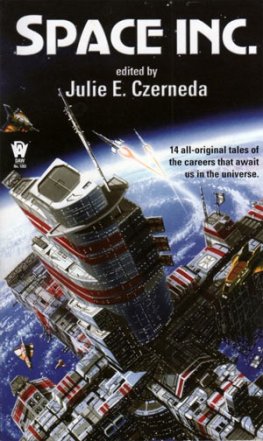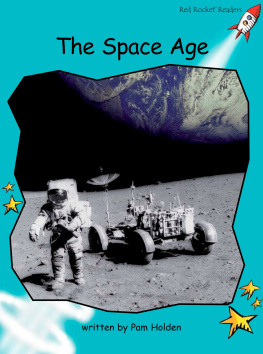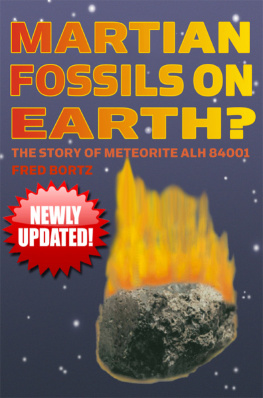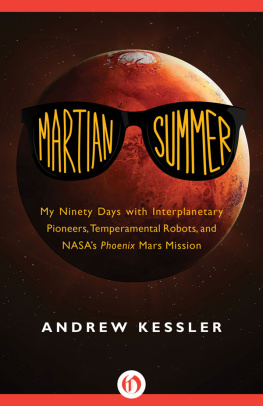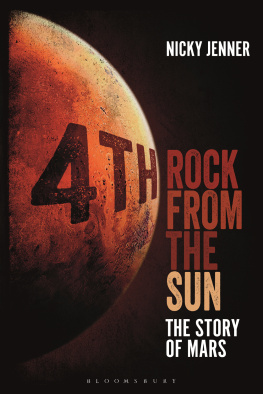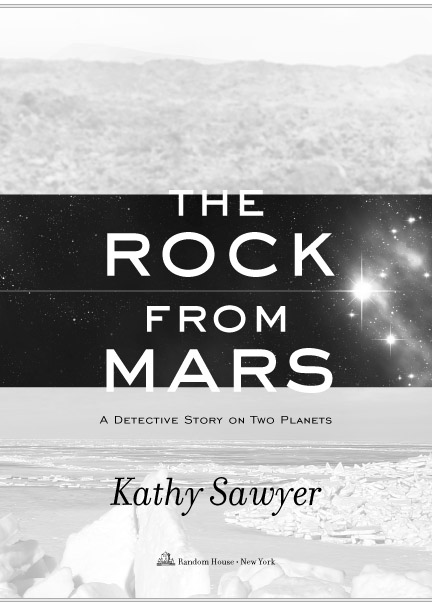Kathy Sawyer - The Rock from Mars: A Detective Story on Two Planets
Here you can read online Kathy Sawyer - The Rock from Mars: A Detective Story on Two Planets full text of the book (entire story) in english for free. Download pdf and epub, get meaning, cover and reviews about this ebook. year: 2006, publisher: Random House, genre: Detective and thriller. Description of the work, (preface) as well as reviews are available. Best literature library LitArk.com created for fans of good reading and offers a wide selection of genres:
Romance novel
Science fiction
Adventure
Detective
Science
History
Home and family
Prose
Art
Politics
Computer
Non-fiction
Religion
Business
Children
Humor
Choose a favorite category and find really read worthwhile books. Enjoy immersion in the world of imagination, feel the emotions of the characters or learn something new for yourself, make an fascinating discovery.

- Book:The Rock from Mars: A Detective Story on Two Planets
- Author:
- Publisher:Random House
- Genre:
- Year:2006
- Rating:3 / 5
- Favourites:Add to favourites
- Your mark:
The Rock from Mars: A Detective Story on Two Planets: summary, description and annotation
We offer to read an annotation, description, summary or preface (depends on what the author of the book "The Rock from Mars: A Detective Story on Two Planets" wrote himself). If you haven't found the necessary information about the book — write in the comments, we will try to find it.
It began sixteen million years ago. An asteroid crashing into Mars sent fragments flying into space and, eons later, one was pulled by the Earths gravity onto an icy wilderness near the southern pole. There, in 1984, a geologist named Roberta Score spotted it, launching it on a roundabout path to fame and controversy.
In its new home at NASAs Johnson Space Center in Houston, the rock languished on a shelf for nine years, a victim of mistaken identity. Then, in 1993, the geochemist Donald Duck Mittlefehldt, unmasked the rock as a Martian meteorite. Before long, specialist Chris Romanek detected signs of once-living organisms on the meteorite. And the obscure rock became a rock star.
But how did nine respected investigators come to make such startling claims about the rock that they triggered one of the most venomous scientific battles in modern memory? The narrative traces the steps that led to this risky move and follows the rippling impact on the scientists lives, the future of space exploration, the search for life on Mars, and the struggle to understand the origins of life on Earth.
From the second the story broke in Science magazine in 1996, it spawned waves of excitement, envy, competitive zeal, and calculation. In academia, in government agencies, in laboratories around the world, and even in the Oval Officewhere an inquisitive President Clinton had received the news in secret players of all kinds plotted their next moves. Among them: David McKay, the dynamic geologist associated with the first moon landing, who labored to achieve at long last a second success; Bill Schopf of UCLA, a researcher determined to remain at the top of his field and the first to challenge McKays claims; Dan Goldin, the boss of NASA; and Dick Morris, the controversial presidential adviser who wanted to use the story for Clintons reelection and unfortunately made sure it ended up in the diary of a $200-an-hour call girl.
Impeccably researched and thrillingly involving, Kathy Sawyers The Rock from Mars is an exemplary work of modern nonfiction, a vivid account of the all-too-human high-stakes drive to learn our true place in the cosmic scheme.
Kathy Sawyer: author's other books
Who wrote The Rock from Mars: A Detective Story on Two Planets? Find out the surname, the name of the author of the book and a list of all author's works by series.

